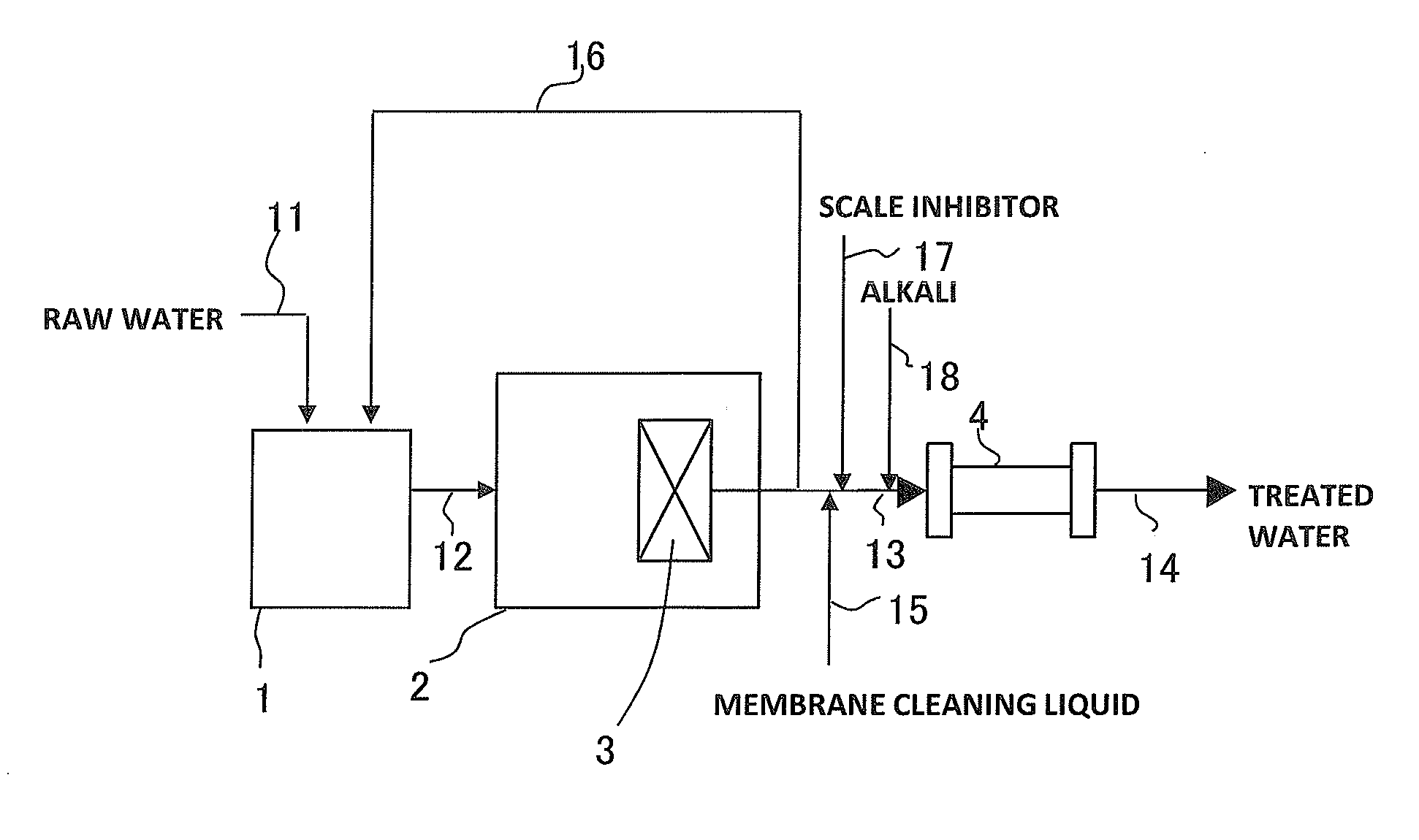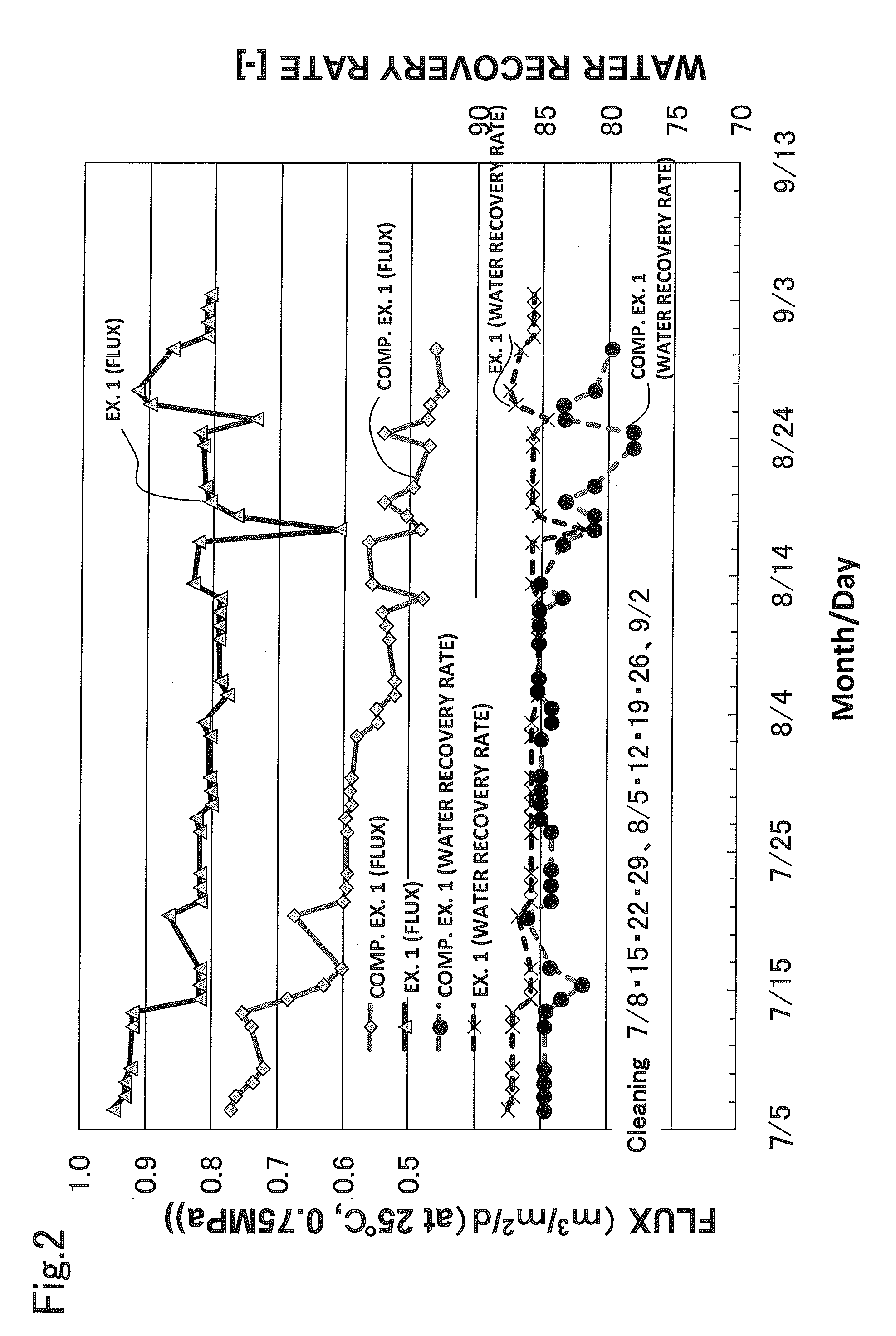Method and apparatus for treating organic wastewater
- Summary
- Abstract
- Description
- Claims
- Application Information
AI Technical Summary
Benefits of technology
Problems solved by technology
Method used
Image
Examples
example 1
[0052]Electronic industry wastewater (TOC: 80 to 100 mg / L) as raw water was aerobically treated with an MBR system (sludge concentration: 4,000 to 8,000 mg / L) under a load of 0.5 to 1.0 kg-BOD / m3 / d using organic wastewater treatment apparatus illustrated in FIG. 1. The following separation membranes and RO membranes were used in an MBR biological reactor 2 and an RO membrane separation apparatus 4. During normal operation, the TOC concentration in the MBR permeate water (membrane permeate water) was 3 to 5 mg / L.
[0053]Separation membranes: PVDF submerged hollow filament UF membranes (manufactured by MITSUBISHI RAYON CO., LTD., membrane area 12 m2)
[0054]RO membranes: aromatic polyamide spiral RO membranes (manufactured by NITTO DENKO CORPORATION)
[0055]The membranes in the treatment apparatus were cleaned once a week in the following manner. While a separation membrane module 3 was kept immersed in the sludge in the biological reactor 2, 26 L of a 700 mg-Cl / L aqueous sodium hypochlorit...
PUM
 Login to View More
Login to View More Abstract
Description
Claims
Application Information
 Login to View More
Login to View More - R&D
- Intellectual Property
- Life Sciences
- Materials
- Tech Scout
- Unparalleled Data Quality
- Higher Quality Content
- 60% Fewer Hallucinations
Browse by: Latest US Patents, China's latest patents, Technical Efficacy Thesaurus, Application Domain, Technology Topic, Popular Technical Reports.
© 2025 PatSnap. All rights reserved.Legal|Privacy policy|Modern Slavery Act Transparency Statement|Sitemap|About US| Contact US: help@patsnap.com



